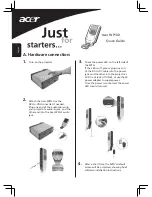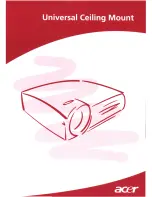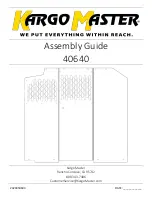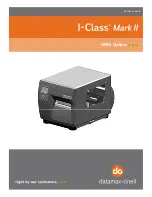
FrSky Electronic Co., Ltd. www.frsky-rc.com Contact us: frsky@frsky-rc.com
Add: F-4,Building C, Zhongxiu Technology Park, No.3 Yuanxi Road, Wuxi, 214125, Jiangsu, China Technical Support: sales4tech@gmail.com
01140187
Version
1.0
FrSky TANDEM X20S Manual
FrSky Electronic Co., Ltd. www.frsky-rc.com Contact us: frsky@frsky-rc.com
Add: F-4,Building C, Zhongxiu Technology Park, No.3 Yuanxi Road, Wuxi, 214125, Jiangsu, China Technical Support: sales4tech@gmail.com
01140187
Version
1.0
FrSky TANDEM X20S Manual
FrSky Electronic Co., Ltd. www.frsky-rc.com Contact us: frsky@frsky-rc.com
Add: F-4,Building C, Zhongxiu Technology Park, No.3 Yuanxi Road, Wuxi, 214125, Jiangsu, China Technical Support: sales4tech@gmail.com
01140187
Version
1.0
FrSky TANDEM X20S Manual
FrSky Electronic Co., Ltd. www.frsky-rc.com Contact us: frsky@frsky-rc.com
Add: F-4,Building C, Zhongxiu Technology Park, No.3 Yuanxi Road, Wuxi, 214125, Jiangsu, China Technical Support: sales4tech@gmail.com
01140187
Version
1.0
FrSky TANDEM X20S Manual
Step 2:
Set the Channel Range
The TANDEM RF module supports 24 channels. the channel range is configurable, and it needs to be double
checked before use.
Range Check
Step 3:
Set the Receiver Number
The system will assign you the receiver a number
automatically, when you create a new model, and this
can be easily changed. The range of the Model ID is
00-63, with the default number being 01. Once the
receiver is set to the desired number and is bound to the
TANDEM X20S, the bind procedure will not need to be
repeated unless the receiver number is changed. At this
point, set the receiving number to your preferred
number and repeat the binding operation.
Internal
Range Check
Step 4 :
Registration
In ACCESS model, select the STATE [Register] into Registration status on radio side. Then Press the F/S button
and power on your receiver, and select the “RX Name XX” and [REGISTER] to complete the Registration process
then power down the receiver.
Internal
Range Check
Register
Step 5:
Automatic binding (Smart Match )
Move the cursor to Rx1[BIND],and select it, power your receiver, select the RX, and complete the process, the
system will confirm "Bind succeed". (Pressing the "F/S" button is not required in ACCESS to Bind. Please the
receivers manual for details).
Internal
Range Check
Register
Internal
Range Check
Register
Step 6:
Set Failsafe mode
There are 3 failsafe modes when enable: No Pulse, Hold, Custom.
Then rotate the Encoder to set your failsafe for each channel and short press Encoder to finish the setting. Wait 9
seconds before the failsafe takes effect.
Notice:
● When failsafe is disabled on TANDEM X20S side, the failsafe set on receiver side will be used.
● SBUS port does not support the No Pulse failsafe mode and always outputs. Set “Hold” or “Custom” for SBUS
port.
● No Pulse: on loss of signal the receiver produces no
pulses on any channel. To use this type, select it in the
menu and wait 9 seconds for the failsafe to take effect.
● Hold: the receiver continues to output the last
positions before signal was lost. To use this type, select
it in the menu and wait 9 seconds for the failsafe to take
effect.
● Custom: pre-set to required positions on lost signal.
Move the cursor to the failsafe mode of channel and
press Encoder, then choose the Custom mode. Move
the cursor to the channel you want to set failsafe on, and
press Encoder.
Range Check
Register
Model Setup for TANDEM X20S External RF Module
The external RF module can be powered on or off by
software. The setup process is the same as that for the
internal RF. External modules should be closed when
not in use.
Range Check
Bind
Step 7:
Range
Range refers to TANDEM X20S range check mode. A pre-flight range check should be done before each flying
session. Move the cursor to “STATE”, scroll the Encoder to select “RANGE” mode and press Encoder. In range
check mode, the effective distance will be decreased to 1/30. Press the Encoder again, turn to normal state.
Range Check
Register
Range Check
Register
Where to Fly
We recommend that you fly at a recognized model airplane flying field. You can find model clubs and fields by asking
your nearest hobby dealer.
CE
The product may be used freely in these countries: Germany, UK, Italy, Spain, Belgium, Netherlands, Portugal,
Greece, Ireland, Denmark, Luxembourg, Austria, Finland, Sweden, Norway, France and Iceland.
To ensure the safety of yourself and others, please observe the following precautions.
Have regular maintenance performed.
Although your TANDEM X20 protects the model memories with non-vol-
atile EEPROM memory (which does not require periodic replacement) and of a battery, it still should have regular
check-ups for wear and tear. We recommend sending your system to your FrSky Service Center annually during your
non-flying-season for a complete check-up and service.
Using a fully charged battery (DC 6.5~8.4V). A low battery will soon die, causing loss of control and a crash. When
you begin your flying session, reset your transmitter’s built-in timer, and during the session pay attention
to the duration of usage. Also, if your model used a separate receiver battery, make sure it is fully charged before
each flying session.
Stop flying long before your batteries become over discharged. Do not rely on your radio’s low battery
warning systems, intended only as a precaution, to tell you when to recharge. Always check your transmitter
and receiver batteries prior to each flight.
FLYING SAFETY
Warning:
Battery
Always pay particular attention to the flying field’s rules,
as well as the presence and location of spectators,
the wind direction, and any obstacles on the field. Be very careful flying in areas near power lines, tall buildings, or
communication facilities as there may be radio interference in their vicinity.
This equipment has been tested and found to comply with the limits for a Class B digital device, pursuant to part
15 of the FCC Rules
FCC
At the flying field
To prevent possible damage to your radio gear, turn the power switches on and off in the proper sequence:
1. Pull throttle stick to idle position, or otherwise disarm your motor/engine.
2. Turn on the transmitter power and allow your transmitter to reach its home screen.
3. Confirm the proper model memory has been selected.
4. Turn on your receiver power.
5. Test all controls. If a servo operates abnormally, don’t attempt to fly until you determine the cause of the problem.
6. Start your engine.
7. Complete a full range check.
8. After flying, bring the throttle stick to idle position, engage any kill switches or otherwise disarm your motor/engine.
If you do not turn on your system on and off in this order, you may damage your servos or control surfaces, flood your
engine, or in the case of electric-powered or gasoline-powered models, the engine may unexpectedly turn on and
cause a severe injury.
FrSky is continuously adding features and improvements to our radio systems. Updating (via USB Port or the Micro
SD card) is easy and free. To get the most from your new transmitter, please check the download section of the
FrSky website for the latest update firmware and guide for adjusting your sticks. (www.frsky-rc.com)
Updates
Make sure your transmitter can’t tip it over.
If it is knocked over, the throttle stick may be accidentally moved,
causing the engine to speed up. Also, damage to your transmitter may occur.
In order to maintain complete control of your aircraft it is important that it remains visible at all times. Flying
behind large objects such as buildings, grain bins, etc. must be avoided. Doing so may interrupt the radio
frequency link to the model, resulting in loss of control.
Do not grasp the transmitter's antenna during flight. Doing so may degrade the quality of the radio frequency
transmission and could result in loss of control.
As with all radio frequency transmissions, the strongest area of signal transmission is from the sides of the
transmitter's antenna. As such, the antenna should not be pointed directly at the model. If your flying style creates
this situation, easily move the antenna to correct this situation.
Don’t fly in the rain!
Water or moisture may enter the transmitter through the antenna or stick openings and
cause erratic operation or loss of control. If you must fly in wet weather during a contest, be sure to cover your
transmitter with a plastic bag or waterproof barrier. Never fly if lightning is expected.




















